Laser Tattoo Removal — Sessions, Pain, Risks & Results Explained

Content:
- History and Evolution of Laser Tattoo Removal Methods
- Laser Tattoo Removal Process
- Who Is Suitable for Laser Tattoo Removal
- Who Is Not Suitable for Laser Tattoo Removal
- Preparation for the Laser Tattoo Removal Procedure
- Proper Skin Care After Laser Removal
In the world today, tattoos are an integral part of culture and self‑expression. However, what should one do if a design that once seemed like a good idea now causes negative emotions or does not fit your current lifestyle? The lifesaver might be the procedure of laser tattoo removal. In this article we will examine the main aspects of this procedure, including the laser removal process, those for whom it is suitable and those for whom it is not, as well as recommendations for preparation for the procedure and skin care afterwards.
For a long time aesthetic medicine could only offer complex and traumatic methods for tattoo removal, such as excision and skin graft transplantation, various chemical and mechanical peels, cryosurgery, electrocoagulation, and so on. While these methods are undoubtedly effective, they are very painful and carry serious complications, primarily the formation of coarse scars at the site of the former design, since during such procedures direct damage to the skin occurs. One of the latest developments in aesthetic medicine is tattoo removal using a laser. This method is rightfully considered the most effective and safe to this day.
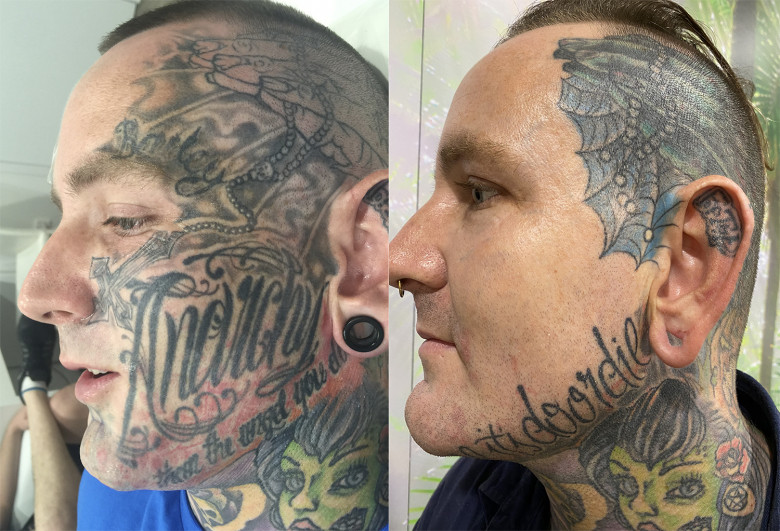
History and Evolution of Laser Tattoo Removal Methods
The first experiments using a laser to remove tattoos date back to the 1960s. It was then that a ruby laser was first applied for these purposes, and later other types of lasers (argon, carbon dioxide based, neodymium). However, for a long time the use of this new method was limited by the high risk of serious scarring at the removal site, which nullified all hypothetical advantages of the procedure over surgical methods.
A breakthrough in laser dermatology was the discovery in 1983 of the concept of selective photothermolysis, based on the selective ability of biological tissues to absorb light radiation of different wavelengths. When a laser beam hits the skin, it affects its main components (chromophores) – water, haemoglobin and melanin – differently, since the absorption spectra of these substances differ. When chromophores absorb radiation, the energy of the laser beam is converted into thermal energy, and at sufficient power this leads to destruction of the target (for example, tattoo pigment). The study of the processes of interaction between laser radiation and biological tissues served as an impetus for further development and production of lasers for aesthetic medicine.
At present there are two main methods for tattoo removal using a laser.
Ablative laser skin resurfacing
Laser ablation literally means evaporation of part of the tissue using radiation. The method consists in short intense pulses heating the water contained in the upper layers of the skin (the epidermis). The water evaporates, and together with it the epidermal cells containing tattoo pigment particles are dried out and exfoliated. The procedure is performed using a CO₂ laser or erbium laser, with subsequent regeneration of the damaged areas over 2–3 weeks. This method is good for removing tattoos whose colour pigment lies in the upper layers of the skin. With deeper pigment placement, using this method carries the risk of scarring.
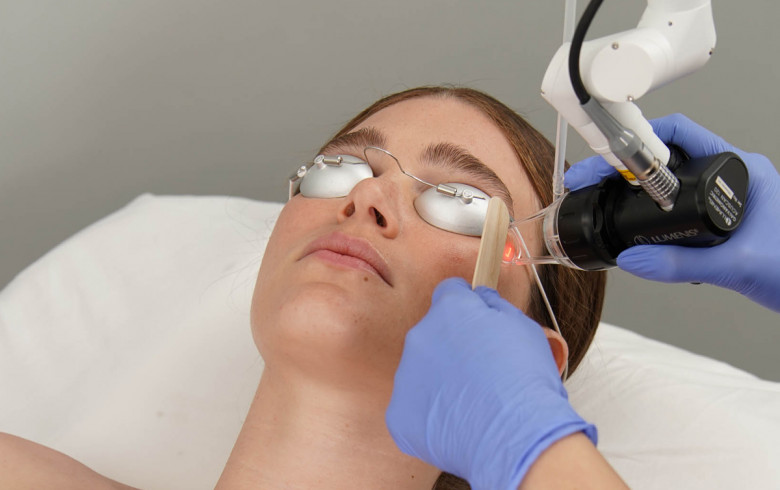
Selective photothermolysis (photocavitation)
This method is based on directing laser radiation directly at the tattoo‑pigment particles without damaging the skin. Pigment particles absorb the radiation and under its influence are decolourised and broken down into fine fragments, which are then removed from the body via the lymphatic system.
To achieve the desired effect, first and foremost it is necessary to select a radiation wavelength corresponding to the tattoo pigment colour, and also to set a pulse duration that achieves maximum mechanical destruction of pigment particles with minimal thermal impact on surrounding tissues.
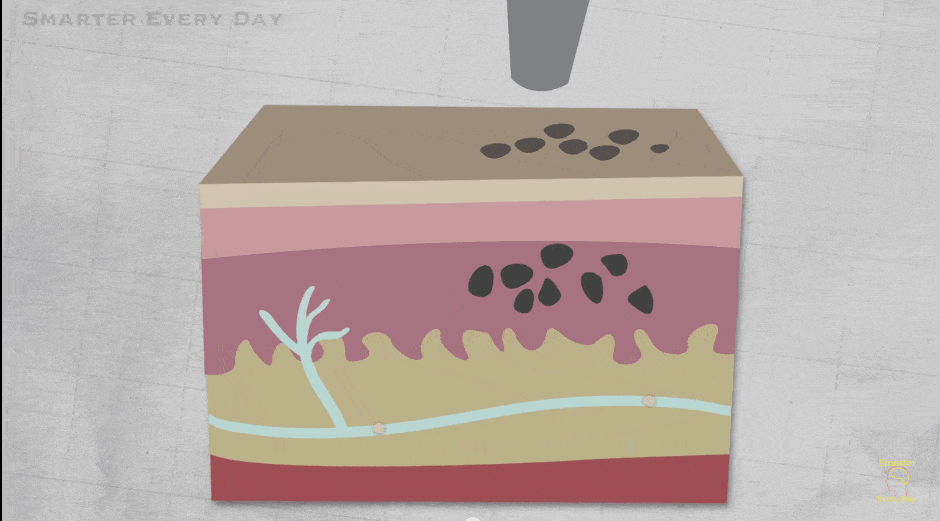
Careful adherence to these conditions makes it possible to minimise the negative impact of radiation on the epidermis and avoid complications. The procedure is carried out in several sessions with intervals from 4 to 8 weeks between sessions. The number of sessions depends on the tattoo size, pigment type, pigment depth, as well as individual metabolic characteristics of the body.
Today this method is considered the least painful with minimal probability of complications such as pigmentation, scar formation and changes in skin texture. Use of anaesthesia is usually not required, as the pain is comparable to that experienced during tattooing. However, it depends on individual pain tolerance, and anaesthetic can be used if necessary.
Different types of lasers are used for tattoo removal, each with its own characteristics and advantages. Here are some of the most common types of lasers used for tattoo removal:
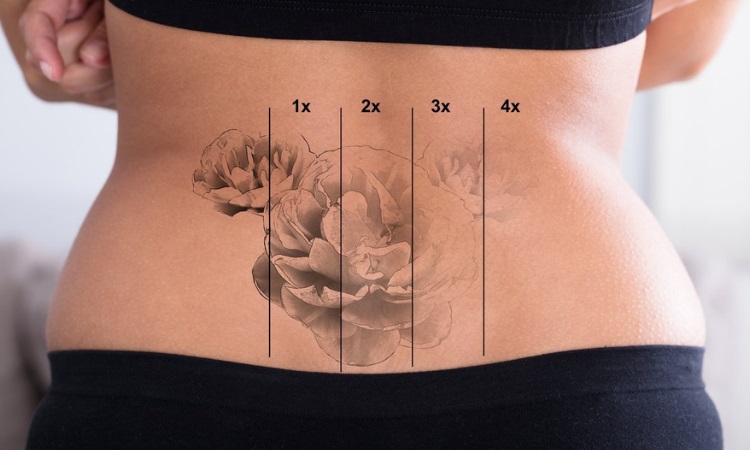
Short‑pulse nanosecond lasers (Q‑switched lasers)
These lasers are the most common choice for tattoo removal. They generate short, high‑energy pulses that shatter tattoo pigments, allowing the body to naturally eliminate them. Q‑switched lasers are typically used for removing coloured and black tattoos.

Long‑pulse microsecond lasers (Long‑pulsed lasers)
These lasers generate long, low‑energy pulses, enabling gentler treatment of the skin and reduction of complication risks. They are typically used for removing tattoos with lighter pigment loads or for people with darker skin types.
Fractional lasers
These lasers do not treat the entire tattoo area at once, but work on small sections, allowing more precise control of the removal process. They can also be effective for removing old or deep tattoos.
Picosecond lasers
These lasers produce pulses much shorter in duration than Q‑switched lasers, which can lead to faster and more effective tattoo removal. They can be particularly useful for removing tattoos with difficult‑to‑treat colours such as green and blue.
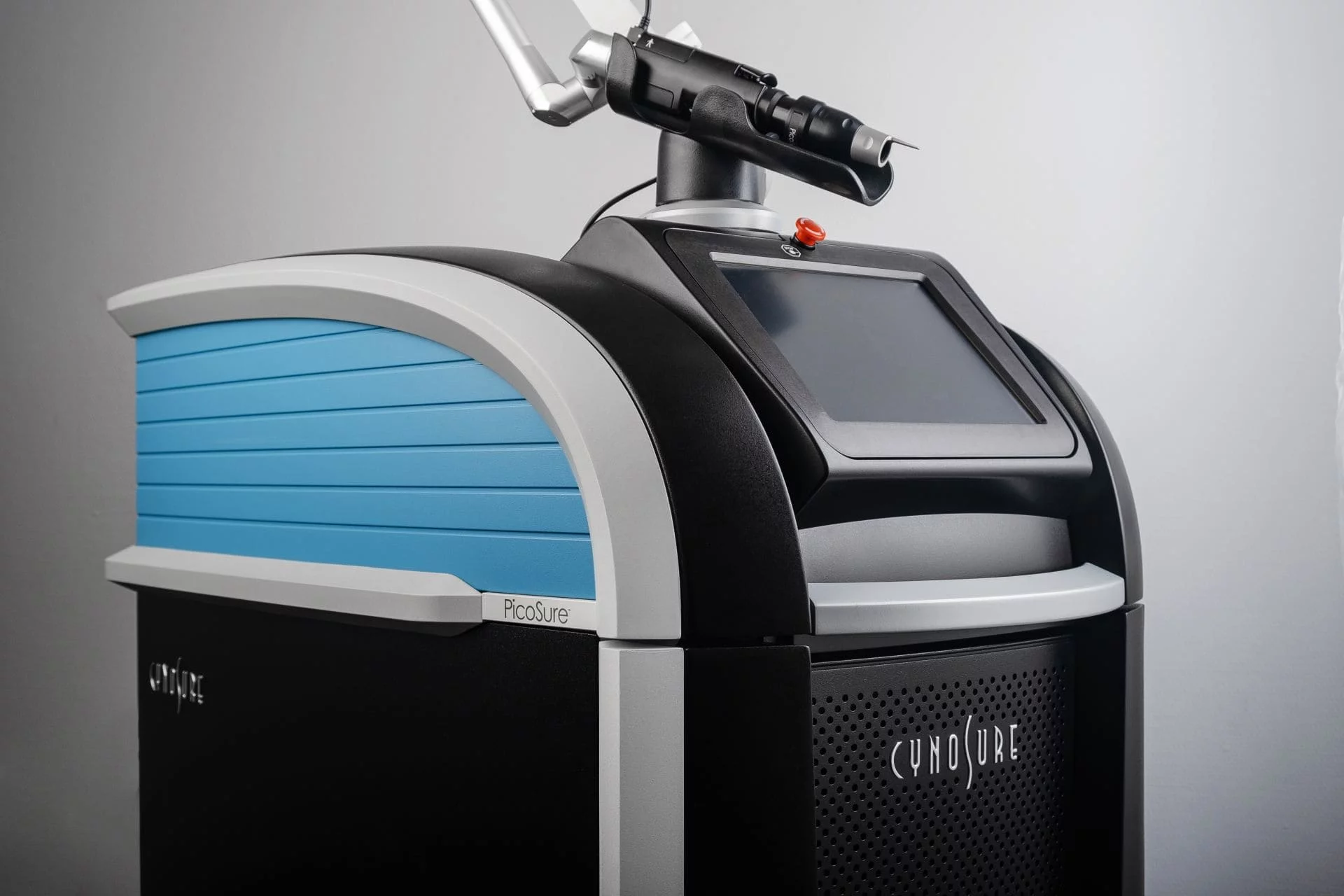
Ruby lasers
These lasers, which use a ruby crystal to generate light, were among the first used for tattoo removal. However, due to limitations in the colour spectrum, they are usually less effective for coloured tattoos and are mainly used for removing black and blue pigments.
Laser Tattoo Removal Process
Laser tattoo removal is a process based on using high‑energy laser beams directed at the pigment in the skin. These beams break down the pigment into tiny fragments, which are then absorbed by the body and removed through the lymphatic system. The main principle is that different tattoo colours absorb different laser wavelengths, allowing the specialist to choose the most appropriate laser for removing a specific tattoo type.
The procedure is usually carried out over several sessions, depending on the tattoo size, colour and depth. Each session typically lasts from a few minutes to several hours, depending on the complexity and size of the area being treated.
Who Is Suitable for Laser Tattoo Removal
Laser tattoo removal may be an appropriate option for people who want to completely remove a tattoo or change its design. The main categories of people for whom the procedure is recommended include:
- People whose tattoos are in visible areas and interfere with professional activity or social adaptation.
- Those who experience negative emotions or psychological discomfort from existing tattoos.
- People who want to remove or lighten a tattoo in order to replace it with a new one or modify/correct the design of the previous image.
Who Is Not Suitable for Laser Tattoo Removal
While laser tattoo removal can be effective for most people, there are certain groups for whom this procedure may not be recommended or could even be dangerous. These include:
People with certain skin diseases such as dermatitis, psoriasis and eczema. These people may have a higher risk of complications or poor healing after the procedure.
Patients with oncological diseases. People suffering from cancer may have a weakened immune system, which may impede the healing process after tattoo removal.
Pregnant and breastfeeding women. During pregnancy and breastfeeding, certain limitations may apply to medical procedures, including laser tattoo removal.
Preparation for the Laser Tattoo Removal Procedure
Preparation for laser tattoo removal involves several steps. First, a consultation with a qualified specialist is necessary to assess your skin and determine whether the procedure is suitable for you. Next, it is important to follow the specialist’s recommendations for preparing for the procedure, including avoiding sun exposure and using special creams to protect the skin.
Proper Skin Care After Laser Removal
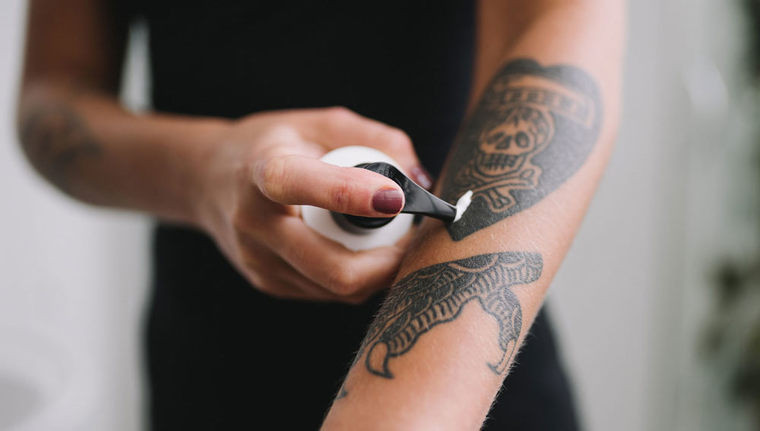
After laser tattoo removal, proper skin care plays a key role in the healing process and prevention of complications. By following a few simple but important rules, you can make the skin recovery process as comfortable and effective as possible. Here are some tips to help you with this:
Avoid moisture. After the procedure it is important to avoid water contact with the treated skin area for the first 24 hours. This will help prevent infection and accelerate healing.
Avoid sunbathing and exposure to steam. For two weeks after the procedure avoid sun exposure, tanning beds, baths, saunas and swimming pools. It is also important to prevent skin from steaming in the shower. If you plan to be outdoors, apply sunscreen with SPF no less than fifty to the treated skin area.
Avoid mechanical irritation. Do not scratch, pick at or rub the treated skin area. This may lead to infection and scarring. Also do not shave the skin in this area until full healing has occurred.
Thorough skin care. To reduce discomfort you may use a panthenol‑containing cream. After the burning sensation has disappeared, you can apply a cream to improve blood circulation and accelerate pigment removal via the lymphatic system.
Monitor your body condition. To speed up pigment elimination, perform gentle massage of the treated skin area. It is also important to drink more water during the first week after the procedure to help the lymphatic system function more effectively.
Adhering to these simple rules will help you minimise the risk of complications and ensure fast and comfortable skin healing after laser tattoo removal.
Laser tattoo removal is an effective and relatively safe way to get rid of unwanted tattoos on the skin. However, before making a decision about the procedure, it is important to discuss it with a qualified specialist and consider all risks and contraindications. Remember that results may vary depending on individual characteristics and tattoo features.
How to Choose a Tattoo Removal Specialist
When choosing a specialist for laser tattoo removal, you should consider a number of important criteria to ensure the safety and effectiveness of the procedure. Here are some key points to pay attention to:
-
Professional qualification and experience: Check the specialist’s qualifications and experience in laser tattoo removal. Find out where they were trained and how many years they have worked in this field. Experienced specialists usually have deeper knowledge of the procedure and can offer more effective solutions to your problem.
-
License and certificates: Make sure the specialist has all the necessary licenses and certificates to perform laser tattoo removal. This guarantees professionalism and compliance with quality and safety standards.
-
Equipment and technologies: Learn about the equipment and technologies used by the specialist. Ensure that they operate with modern equipment that provides high effectiveness and safety of the procedure. Evaluate
-
Reviews and recommendations: Ask the specialist for reviews and recommendations from previous clients. This will help you get an idea of the quality of their work and client satisfaction levels.
-
Consultation and treatment plan: Before starting the procedure, have a consultation with the specialist to discuss your goals and expectations for laser tattoo removal. A good specialist will offer you an individual removal plan, taking into account the specifics of your skin and tattoo.
-
Prices and cost: Compare prices and cost of services from various specialists, but do not forget that procedure quality and safety should be the priority. Do not save on your skin health.
Choosing a qualified and experienced specialist for laser tattoo removal plays a decisive role in the success of the procedure and the final result. Therefore, do not rush, thoroughly research and consult before making your choice.
Laser Tattoo Removal — Frequently Asked Questions
What is laser tattoo removal?
A laser shatters pigment into microparticles that your lymphatic system clears; Q-switch and picosecond devices are standard.
How many sessions for complete removal?
Most tattoos need 5 – 8 sessions spaced 6 – 8 weeks; tough colours or deep ink may extend to 12 months.
Is laser tattoo removal painful?
Feels like rapid rubber-band snaps; clinics use cooling devices and topical anaesthetic to dull sensation.
Will there be scars afterward?
Scarring is rare with proper settings; temporary lightening or darkening of skin can occur.
Are all colours removed?
Black is easiest; greens, blues and yellows need more passes or dual-wavelength lasers.
How often can sessions be done?
Every 6 – 8 weeks to let skin heal and immune cells flush pigment debris.
Contraindications & risks?
Contra-indications: pregnancy, epilepsy, cancer, keloids. Risks: burns, blisters, post-inflammatory pigment change if aftercare is poor.
Post-laser skin care?
No sun, pools or saunas for 2 weeks; apply healing ointment, avoid picking scabs, keep area clean.
When is the result visible?
Lightening shows after session 1; final clearance evaluated 3 – 6 months post-course.
Removal vs cover-up?
Cover-up is quicker/cheaper but needs dark ink; full removal suits those wanting bare skin or a blank canvas.
How much does laser tattoo removal cost?
Average US pricing: $200–$500 per session palm-size; varies by colour, depth, clinic and region.
Can a tattoo be removed in one session?
Only very light, shallow ink may fade heavily in one pass; most tattoos need staged treatment.




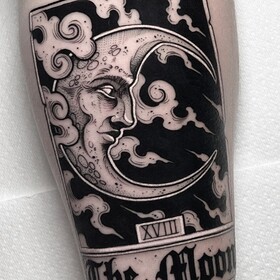


Comments (0)